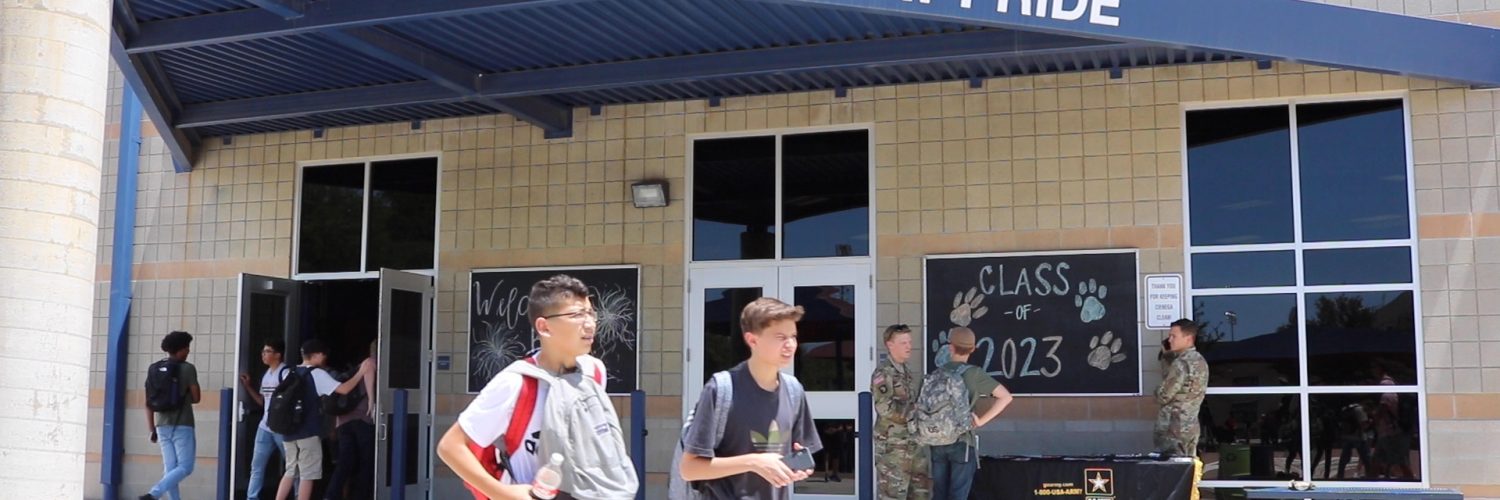About 30 minutes southeast of Tucson, along Interstate 10, resides the census-designated town of Vail, a small, close-knit desert community with thousands of young students itching to learn.
Vail Unified School District, which serves the Vail community and portions of Tucson, includes one inclusive preschool, ten elementary schools, six middle schools, four high schools and the Vail Academy and High School, which serves kindergarten through 12th grade.
This year, Vail School District became one of the first recipients of a grant from the A for Arizona Expansion Fund, a statewide, nonprofit fund designed to help the state’s best schools — district, magnet or charter — expand to serve more students in their communities.
“Vail is a really special and unique place,” said Debbie Penn, deputy superintendent of teaching and learning at Vail. “We’ve been blessed with both stable and effective leadership, which gives us a consistent culture. We highly value relationships, and we work together.”
Vail’s motto defines its culture: “Where Education is a Community Effort.”
“We really live that out, and we respond to the needs of our community, and we partner with our community,” Penn said.
“One of the things that really makes this a unique district is that we have a common vision, and we have a common set of values… from which we make most of our decisions,” she said. “We can count on each other; we work really well together; we depend on each other… Rather than competing with each other, we work together for common goals.”
Vail plans to use the Expansion Fund grant to expand its Middle College program, an extension of its Early College program that allows high school seniors to enroll in full-time coursework at Pima Community College’s East Campus, potentially earning a full year’s worth of college credit before finishing high school.
“This fund provides us the opportunity to take this year to work with Pima and partner with the other districts in the Tucson area to bring an early college experience to more students and to expand it to the other Pima campuses,” said Raylee May, Vail Early College coordinator. “They’re able to have this opportunity for students, and they can provide that choice for students without having to build an early college program from the ground up.”
More specifically, May said, the Expansion Fund gives Vail the ability to expand effectively and collaborate with other schools. The Middle College and Early College programs offer students exposure to the college campus, providing tools to be successful after high school.
“That’s a really vital part for success,” May said. “One of my students this last year said, ‘The Early College experience is like dipping my toe in without being pushed into the water.’ And that’s really what we want to provide to the greater Tucson area.”
Vail serves nearly 14,000 students, 30 percent of whom receive free-and-reduced lunch. The district’s special education population is just under 12 percent, or about 1,700 students.
“It’s definitely been growing,” said Mark Tate, a member of the district’s governing board. “We’re seeing about a 400 student — or about 2.5 to 3 percent — growth already this year.”
The area south of Tucson is growing rapidly, with 8,000 homes scheduled to be built in the next five years, he said.
Vail is in the process of building its sixth high school, located on Mica Mountain, which Tate said should be open and ready for students by July 2020.
“Every one of our schools that’s eligible for the A+ recognition has earned that from the Arizona Education Foundation,” Penn said.
In fact, Vail has earned a long list of acknowledgments: two National Blue Ribbon Schools awards from the United States Department of Education, seven Golden Bell Awards from the Arizona School Boards Association, and a Sylvia Sharpe Award from the International Society for Technology in Education.
Superintendent Calvin Baker earned the Lifetime Achievement Award from Arizona School Administrators, and a number of Vail faculty have received the Phoenix Business Journal’s 40 Under 40 Award and the University of Arizona Athletics Outstanding Faculty Award.
“It’s kind of interesting, because Vail isn’t a city, isn’t a town; it’s just a community,” Tate said. “Thirty years ago, Vail was a one-school district and sort of was town square and almost was the government itself.
“We’re still kind of the center of the community. As it has grown, of course, other areas have grown as well. We have a number of faith-based [institutions] in the community. Those have come alongside the district and have partnered on a number of things throughout the district.”
According to Kevin Carney, assistant superintendent at Vail, the district is able to attract and retain quality teachers due to its good reputation and connection to the community.
“In terms of attracting teachers… in terms of basic needs in life — food, water and shelter — there’s also another basic need we have, which is to be connected to something good and something that’s doing well,” he said.
As for retaining teachers once they are at Vail, the district focuses on its leaders.
“Across industries, not just in education, it shows that people don’t quit jobs, they quit bosses, or supervisors, if you will,” Carney said. “And we have some phenomenal leadership at our school sites that make people go, ‘You know what? I really respect my leader, I want to be a part of what’s going on here, and I don’t want to leave.’”















Add comment